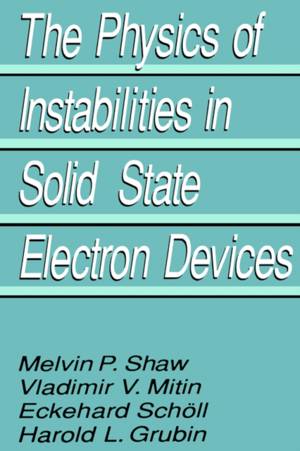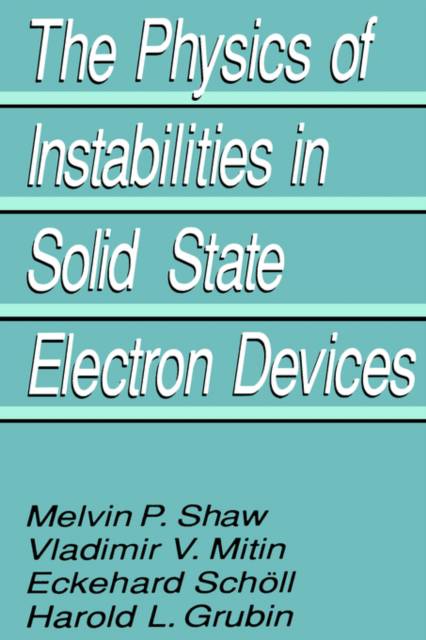
- Afhalen na 1 uur in een winkel met voorraad
- Gratis thuislevering in België vanaf € 30
- Ruim aanbod met 7 miljoen producten
- Afhalen na 1 uur in een winkel met voorraad
- Gratis thuislevering in België vanaf € 30
- Ruim aanbod met 7 miljoen producten
Zoeken
The Physics of Instabilities in Solid State Electron Devices
Harold L Grubin, V V Mitin, E Schöll, M P Shaw
Hardcover | Engels
€ 167,95
+ 335 punten
Uitvoering
Omschrijving
The past three decades have been a period where useful current and voltage instabilities in solids have progressed from exciting research problems to a wide variety of commercially available devices. Materials and electronics research has led to devices such as the tunnel (Esaki) diode, transferred electron (Gunn) diode, avalanche diodes, real-space transfer devices, and the like. These structures have proven to be very important in the generation, amplification, switching, and processing of microwave signals up to frequencies exceeding 100 GHz. In this treatise we focus on a detailed theoretical understanding of devices of the kind that can be made unstable against circuit oscillations, large amplitude switching events, and in some cases, internal rearrangement of the electric field or current density distribution. The book is aimed at the semiconductor device physicist, engineer, and graduate student. A knowledge of solid state physics on an elementary or introductory level is assumed. Furthermore, we have geared the book to device engineers and physicists desirous of obtaining an understanding substantially deeper than that associated with a small signal equivalent circuit approach. We focus on both analytical and numerical treatment of specific device problems, concerning ourselves with the mechanism that determines the constitutive relation governing the device, the boundary conditions (contact effects), and the effect of the local circuit environment.
Specificaties
Betrokkenen
- Auteur(s):
- Uitgeverij:
Inhoud
- Aantal bladzijden:
- 468
- Taal:
- Engels
Eigenschappen
- Productcode (EAN):
- 9780306437885
- Verschijningsdatum:
- 31/01/1992
- Uitvoering:
- Hardcover
- Formaat:
- Genaaid
- Afmetingen:
- 152 mm x 229 mm
- Gewicht:
- 875 g

Alleen bij Standaard Boekhandel
+ 335 punten op je klantenkaart van Standaard Boekhandel
Beoordelingen
We publiceren alleen reviews die voldoen aan de voorwaarden voor reviews. Bekijk onze voorwaarden voor reviews.











